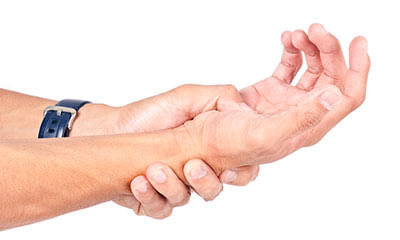Why Does My Heart Feel Weird
I’ve been taking 10 mg citalopram it makes me feel weird I get this weird sensation that starts in my head and goes all ...
Ask Free Question
Dear Lidia, Since how long are you taking citalopram? Usually this weird sensation settles down in 3-5 days. If it is not settled, please consult your doctor again. She/he may add an anxiolytic for 3-4 weeks or may shift you to another group of antidepressants.
Gender- female age-27 I am on metoprolol succinate 50 mg for 19 days now and I have been experiencing weird symptoms eve ...
Ask Free Question
Dear Lybrate user you may visit and take a second opinion on your heart-related issues. Consulting an expert ayurvedic doctor might also help. There can be a possibility of side effects from the medicine. Whenever you have these side effects it may lead to feelings of worry, tension, and anxiety, as you are not clear about the reasons for having these difficulties. These overwhelming feelings may in turn lead to an escalation in breathlessness, worry, etc. So this is like a vicious cycle. Regarding your anxiety, you require to further identify the triggers/situations that lead to such feelings. For example; is the above-mentioned reason? Or something else? Definitely, it is important to first calm yourself down by taking deep breaths and drinking a glass of water. Writing down these anxiety-provoking thoughts may also help in identifying the reasons. You may also try following some lifestyle changes - check your physical activity - are you going for any physical activity - jogging, running, cycling, yoga, etc? Please start following an exercise regime. Secondly, check on your sleep schedule - take bath before sleeping, avoid heavy meals at night, switch off your electronic device at least half an hour before you sleep, relax and meditate, and read or listen to calming music. If things still persist then you may seek counselling.
I am moumita murmu and I am an anxiety patient. In 2019 I was diagnosed with health anxiety and I went for therapy but t ...
Ask Free Question
Health anxiety or illness anxiety disorder needs to be treated with ssris or snris along with short term benzodiazepines, along with cbt for a period of 3-4 weeks to show improvement. Consult an astute psychiatrist. 1 mg ativan, sorry to say won't produce any effect. Good luck.
I am suffering from back pain from a year. It is weird and no doctors telling wat is exact issue. Ortho, gastro, and goi ...
Ask Free Question
People of any age, back pain can affect or different reasonsas people get older, the chance of developing lower back pain increases, due to factors such as previous occupation and degenerative disk disease. Lower back pain may be linked to the bony lumbar spine, discs between the vertebrae, ligaments around the spine and discs, spinal cord and nerves, lower back muscles, abdominal and pelvic internal organs, and the skin around the lumbar area. •acute pain starts suddenly and lasts for up to 6 weeks. •chronic or long-term pain develops over a longer period, lasts for over 3 months, and causes ongoing problems. Home advise: •resting from strenuous activity can help, but moving around will ease stiffness, reduce pain, and prevent muscles from weakening. •applying heat, ice, ultrasound, and electrical stimulation — as well as some muscle-release techniques to the back muscles and soft tissues — may help alleviate pain. •as the pain improves, the physical therapist may introduce some flexibility and strength exercises for the back and abdominal muscles. Techniques for improving posture may also help. •the patient will be encouraged to practice the techniques regularly, even after the pain has gone, to prevent back pain recurrence. Regular exercise helps build strength and control body weight. Guided, low-impact aerobic activities can boost heart health without straining or jerking the back. Before starting any exercise program, talk to a health care professional. There are two main types of exercise that people can do to reduce the risk of back pain: •core-strengthening exercises work the abdominal and back muscles, helping to strengthen muscles that protect the back. •flexibility training aims at improving core flexibility, including the spine, hips, and upper legs. We suggest you to wear lumbosacral corset (belt) which is available at our clinic. If you want you can buy from us, if you are far away from chennai we can send you by courier. The reason why we are conveying you to buy from us is we can demonstrate over the videocall (using whatsapp) and also we can monitor you throughout when to wear it and how long to wear it. And also if you find any difficulty wearing the brace you can also revert back to us for few more suggestions and we can propose you good solution how to go about it. Uses of lumbosacral corset (belt) a lumbosacral corset adds pressure to the intra-abdominal area. This adds stability to the spine. It is prescribed to people suffering from moderate to severe pain. Other benefits of using a lumbar spine belt are: 1.helps in a certain degree of immobilization of facet joints. 2.reduces pain to allow continuation of normal activities. 3.speeds up the healing process. 4.the pressure exerted by a lumbar spine belt helps in stretching the erector spine muscles. 5.this belt can also be used to support the lower back while exercising. Ohelps prevent rolling oprovides stability to lumbar and sacral regions of the back ocan be used when performing actions like lifting and handling heavy items ocan also be used when playing sports orestricts back movement to aid treatment of back problems do’s and don’ts sitting do: • sit as little as possible and then only for short periods. • place a supportive towel roll at the belt line of the back especially when sitting in a car. • when getting up from sitting, keep the normal curves in your back. Move to the front of the seat and stand up by straightening your legs. Avoid bending forward at the waist. • try to keep the normal curves in your back at all times. Don’t: • do not sit on a low soft couch with a deep seat. It will force you to sit with your hips lower than your knees and will round your back. You will loose the normal curve in your back. • do not place your legs straight out in front of you while sitting (e.g. Sitting in the bath tub). Standing do: • if you must stand for a long period of time, keep one leg up on a foot stool. • adapt work heights. Don’t: • avoid half bent positions. Lifting avoid lifting if you can. Do: • use the correct lifting technique. Keep your back straight when lifting. Never stoop or bend forward. Stand close to the load, have a firm footing and wide stance. Kneel on one knee, keeping the back straight. Have a secure grip on the load and lift by straightening your knees. Do a steady lift. Shift your feet to turn and do not twist your back. Don’t: • do not jerk when you lift. • do not bend over the object you are lifting. Lying do: • sleep on a good firm surface. • if your bed sags, use slats or plywood supports between the mattress and base to firm it. You also can place the mattress on the floor, a simple but temporary solution. • you may be more comfortable at night when you use a pillow for support. Don’t: • do not sleep on your stomach unless advised to do so by your doctor or physical therapist. Bending forward do: • keep the natural curves of your back when doing these and other activities: making a bed, vacuuming, sweeping or mopping the floor, weeding the garden or raking leaves. Coughing and sneezing do: • bend backwards to increase the curve of your back while you cough or sneeze. Driving a car do: • drive the car as little as possible. It is better to be a passenger than to drive yourself. • move the seat forward to the steering wheel. Your seat must be close enough to the wheel to keep the natural curves of your back. If your hips are lower than your knees in this position, raise yourself by sitting on a pillow. Exercises for low back pain safety guidelines • an increase in your low back pain can be expected with these exercises. This is acceptable as long as your leg symptoms are not increasing. • if while doing these exercises, your pain worsens or you have new pain or symptoms, stop the exercises and discuss your symptoms with your doctor or physical therapist. • stop exercising and let your doctor or physical therapist know right away if you have any change in your bowel or bladder control or any increase in weakness in your leg or foot. Exercises ‰ •press-ups: keep your back and buttocks relaxed and use your arms to press up. Concentrate on keeping your hips down and push up your upper body as high as possible. •double knee to chest: grasp both your knees with your hands and pull toward your shoulders. Hold the stretch for 1 second. Let your knees return, but keep them bent at arms length. ‰ •lumbar spine stretches: lie on your back. Bring your knees towards your chest. Rotate your knees towards the pain. •side-lying position: lie on your side and face forward. Have both arms straight in front and bend your knees. Turn your head as you move your top arm across your body as far as you can. Keep your arm in place and turn your head back to the starting position. Look back again and turn your head farther if you can. Bring your head and arm back to the starting position. Relax and repeat 10 times on each side. •hamstring stretch: lie on your back with your legs out straight. Raise your leg up and put your hands around the upper leg for support. Slowly straighten the raised knee until you feel a stretch in the back of the upper leg. Hold, then relax and repeat 10 times on each leg. •standing arch: stand with your feet apart and hands on the small of your back with fingers pointing backwards. Bend backwards at the waist, supporting the trunk with your hands. Keep your knees straight. Hold for 5 seconds. Repeat 3 to 5 times. Side glides: stand at a right angle to the wall about 2 feet o eliminate your pain improve your muscular endurance and strength attain better posture, balance, body awareness and co-ordination improve your balance and flexibility learn to lift properly. posture when standing: make sure you have a neutral pelvic position. Stand upright, head facing forward, back straight, and balance your weight evenly on both feet. Keep your legs straight and your head in line with your spine. Posture when sitting: a good seat for working should have good back support, arm rests and a swivel base. When sitting, try to keep your knees and hips level and keep your feet flat on the floor, or use a footstool. You should ideally be able to sit upright with support in the small of your back. If you are using a keyboard, make sure your elbows are at right-angles and that your forearms are horizontal. Shoes: flat shoes place less of a strain on the back. Driving: it is important to have proper support for your back. Make sure the wing mirrors are properly positioned so you do not need to twist. The pedals should be squarely in front of your feet. If you are on a long journey, have plenty of breaks. Get out of the car and walk around. Bed: you should have a mattress that keeps your spine straight, while at the same time supporting the weight of your shoulders and buttocks. Use a pillow, but not one that forces your neck into a seep angle.
At the beginning I had a vibration feeling in the legs. When I was going to sleep at night. I felt like my legs were sha ...
Ask Free Question
I am sorry to hear about your concern but will be happy to assist you. Let's connect over a call so that we can discuss your concern in details and make a suitable treatment plan for you.
Im a 14 year old girl and I saw this just 5 minutes ago, so I have had this weird little pain on my left hand for some t ...
Ask Free Question
I am sorry to hear about your concern but will be happy to assist you. Angina occurs when the heart is not getting enough oxygen. Angina can cause left arm pain that is often accompanied by shoulder, neck, back, or jaw discomfort along with a feeling of indigestion. Angina is often a symptom of coronary artery disease and should be taken seriously. Let's connect over a call so that we can discuss your concern in details and make a suitable treatment plan for you.
I am feeling very scared and stressed kind of anxiety type because of exms. I am unable to read as my heart feels weird, ...
Ask Free Question
Hello, if you have been prescribed this tablet by a psychiatrist for that same condition you can take it. However there are other medicines available for the stress and anxiety which occurs due to exam which are better than clonazepam. You can try taking them or contact me if you need the prescription.
I was taking antidepressants lam 0.25 and desilam with bisonil 2.5.i was depressed and my hearteate was very high so I w ...
Ask Free Question
Hello this may be just a relapse of symptoms. Few medicines have sedation as a major side effect. You can start on drugs that are not sedative.
Last month, my doctor diagnosed me with bronchitis because I was feeling congested and had thick mucus but I was’t cough ...
Ask Free Question
You please start coscopine br syrup 1tsf tds avod fatty foods saline gargles twic daily tab. Levokast ax one daily in evening.
Hi, i’m mia, i’m 23 years old, and i’ve been suffering with me/cfs for 10 years now, along with migraines and allergies. ...
Ask Free Question
Get tmt test to rule out any cardiac issue, do 1.no alcohol 2. Reduce body wt if over wt 3. No smoking/ tobacco 4. Diet - no ghee/ butter, have mix of vegetable oils - mustard, til, ground nut, olive oil, have more green vegetables and fruits, have whole grain atta, no fried. Fast. Spicy / processed/ junk food. Less sugar, potato, rice 5. 30 mts brisk walk daily 6. Deep breathing exercise for 10 mts daily 7. Meditation daily for 10 mts. 6-8 hrs of sleep at night 8. Expose your body to sun for 15-20 mts daily after some oil massage to get vit d. 9. Take more water medicine can not be advised for open question ,for medicine and further advise contact on private chat.








